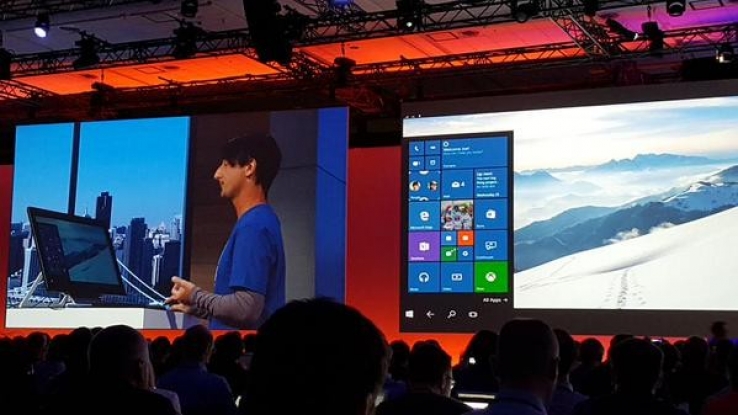There was soooo many cool things announced at //build and a lot of them I knew about with the rest of the Microsoft geek community. HoloLens is awesome and I want one, but we kinda know what it is and what it can do. And as a developer there is still a lot of unknowns on how I get my code onto it. I will touch on HoloLens in a separate post.
There was also the massive surprise that iOS and Android now have SDKs for Visual Studio so you can take your existing app and port it relatively smoothly across to the Windows platform.
What is it?
One of the announcements that was kinda brushed aside a bit and was given the “that’s cool, but what is next” treatment was Continuum. If you haven’t heard of it, it is basically new hardware inside mobile devices that allows you to use your phone as desktop computer. Attached a screen via HDMI or Miracast, mouse and keyboard via Bluetooth, and you have a desktop experience out of your pocket. To get a better feel for what I mean watch Joe Belfiore below introducing Continuum.
Why is it so awesome?
As you saw you will need new handsets to take advantage of Continuum, but that is not my main interest. Joe mentions universal Windows apps, which is the way of the future for developing apps that will run across all of Microsoft devices running Windows 10. There is real potential here for truly leveraging your work in ways previously not heard of. In a nutshell Windows Apps for the Universal App Platform lets you built one app that works across all of the Windows devices, even HoloLens. With Continuum you build your app to work on mobile and desktop, and it will automatically scale to fit the output size used. If the app is used on the phone, the layout will use the phone dimensions, whereas if the app is displayed on a large screen connected to the phone it will display as a desktop app. That is pretty slick. That is highly useful.
Success Depends on Developers
The way I see it is that the success of Continuum depends on developers. It is all well and good that Microsoft showcases how all of the Office apps work, but what about your favourite indie apps? I am especially wondering about games, which could be an obvious thing to want to use on a bigger screen. I am not so sure that developers can suddenly change their apps and code to warrant a new dimension to work on top of the intended form factor. If the majority of users’ apps don’t work on both screen sizes, then it is less likely to be a success. Microsoft need to educate developers on how to accommodate for both screen sizes in the same app, and I am sure there will be some new changes to make sure you can do both from the same install. Until now, you would have downloaded the package for either one or the other screen size.

Pocket Power
The potential is huge though. Having a single device in your pocket that can function as a normal desktop computer breaks down traditional barriers and opinions of mobility and adaption of efficient work habits. Workplaces can have workstations with just screen, mouse and keyboard and employees just have their mobile device with them. This is truly a single device for most purposes (we are probably still a little bit off being able to do everything on a mobile device) and if it is a success you will see changes done to every office. Next, Microsoft just need to make it work with Android and iOS.
What do you think of the possibilities of Continuum? Write you reply in the comments below.

